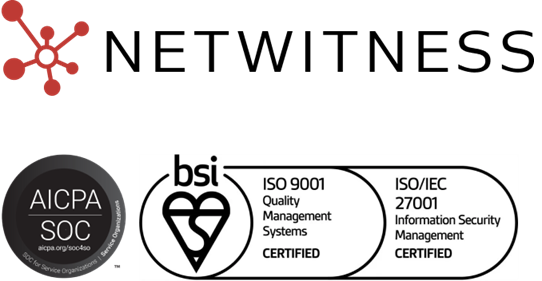Expose Hidden Threats Across All Endpoints
NetWitness Endpoint Detection & Response: Accelerated Detection, Reduced Dwell Time
The NetWitness EDR Advantage
The Endpoint Detection & Response Solution Designed for Large Complex Enterprises
Real-Time Threat Detection
Identify known and unknown threats instantly across all endpoints.

Full Endpoint Visibility
Track file, process, registry, and user activity - on or off the network.
Embedded Behavioral Analytics
UEBA directly at the endpoint, no external processing required.
Minimal System Impact
Lightweight, tamper-proof agent consumes <1% system resources.
The Proven EDR Methodology
How Does NetWitness EDR Work
Full Endpoint Visibility
NetWitness monitors all endpoint activity - processes, file changes, user actions, registry modifications, and network connections - even when devices are off-network. This visibility spans physical, virtual, and cloud-hosted endpoints.
Detect Sophisticated Threats with Behavioral Analytics
NetWitness applies advanced behavioral analytics at the endpoint level, learning normal user and system behavior to spot subtle deviations in real time. This enables early detection of advanced persistent threats, compromised accounts, and insider activity that signature-based tools often miss.
Accelerate Response with Automation
NetWitness EDR enables rapid response - automatically or on demand - with actions like killing processes, isolating hosts, quarantining files, or capturing forensics; dropping response times from hours to seconds.
Why Choose Us
What Makes NetWitness EDR Different
| Capability | What It Enables |
|---|---|
| Endpoint Process Visibility | Track every running process with context, parent-child relationships, and command lines. |
| Automated Threat Intelligence | Classify threats, enrich alerts, and trigger responses using ML. |
| Rapid Forensic Investigations | Preserve data, correlate incidents, and reconstruct attacks for faster triage. |
| Scalable Agent Architecture | Deploy across 100s to 100,000 endpoints with near-zero end-user impact. |
| Real-Time Data Collection | Get full inventories and behavioral insights within minutes of deployment. |
Core Features For Protection
What Sets Us Apart
Plug Into Your Security Stack










Works alongside existing AV/EDR agents.
Expert Insights and Strategies
Exclusive Resources and Documentation
Proven Results Across Industries
Trusted by Security Leaders Worldwide



Stay Ahead of Endpoint Threats—With Confidence
Frequently Asked Questions
1. What is an EDR?
EDR stands for Endpoint Detection and Response. It is a cybersecurity technology that continuously monitors and responds to threats on endpoints such as computers, servers, and mobile devices.
2. How does EDR work?
EDR tools collect data from endpoints in real-time, analyze it to detect suspicious activity, and provide automated or manual responses to contain and remediate threats.
3. What is the difference between EDR and SIEM?
EDR focuses specifically on endpoint security, monitoring and responding to threats on devices. SIEM (Security Information and Event Management) aggregates security data from across the entire network to provide a broader view of security events.
4. What is EDR in cybersecurity?
In cybersecurity, EDR is a critical defense tool that helps detect, investigate, and respond to cyber threats targeting endpoint devices, reducing the risk of breaches.
5. What is the difference between EDR, XDR, and NDR?
EDR focuses on endpoints, XDR (Extended Detection and Response) integrates data across multiple security layers including endpoints, networks, and cloud, while NDR (Network Detection and Response) specializes in detecting threats within network traffic. Learn more on NDR vs EDR.
6. What does an EDR tool do?
An EDR tool detects malicious activity on endpoints, provides alerts, enables investigations, and supports automated or manual threat response actions.




